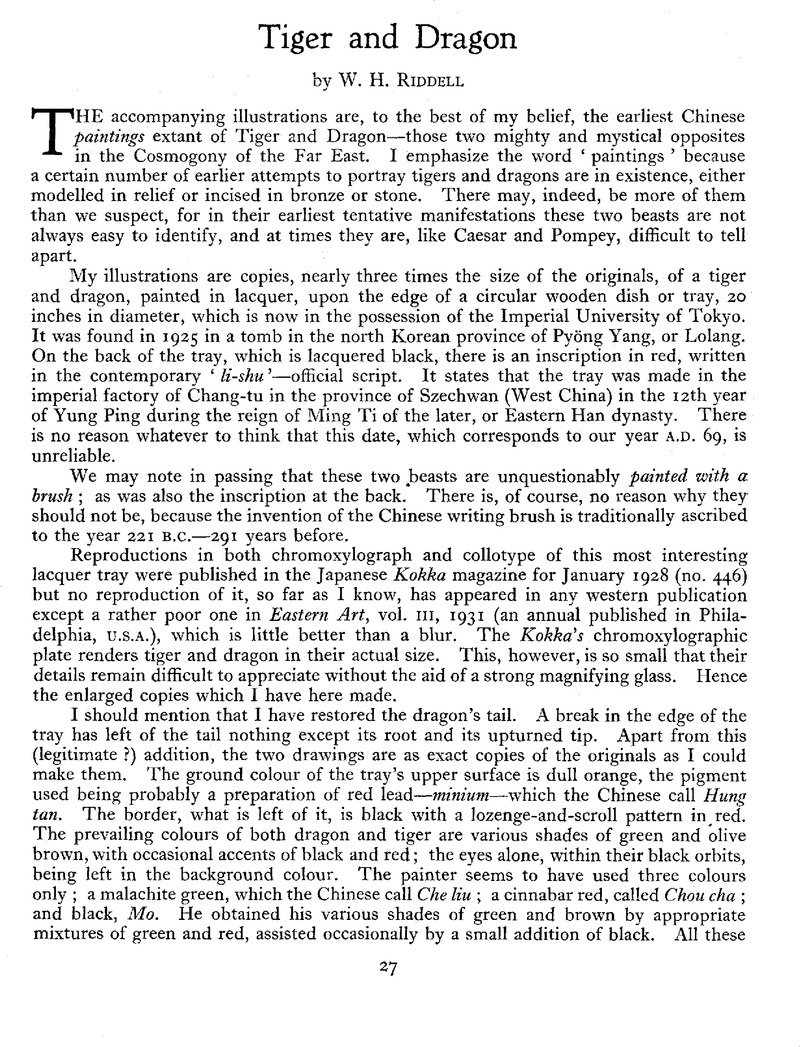No CrossRef data available.
Article contents
Abstract

- Type
- Research Article
- Information
- Copyright
- Copyright © Antiquity Publications Ltd 1945
References
1 Mission Archeologique dans la Chine Septentrionale, (Paris, 1909).
2 Hsieh Ho’s small treatise, which contains his six principles or canons of painting, Ku hwa p’in lu did not see the light until the 5th century A.D.
3 This ‘purple patch’ is lifted with slight modifications from Kakuzo Okakura’s Ideals of the East (Murray, 1905).
4 This same stele of Li Hsi gives us also the first known Chinese landscape. Another reproduction of it will be found in Ferguson’s Outlines of Chinese Art (Chicago, 1919).
5 Muchi’s two pictures also bear inscriptions which may be roughly translated : (a) The roar of the tiger arouses the gale ; (b) The flight of the dragon assembles the clouds. In my old home in the Midlands they would have been called ‘Weather-breeders’.
6 Lent by the Östasiatiska Samlingarna, Stockholm. Reproductions in Ill. Catalogue, in Rene Grousset’s Civilisation of the East, vol. III (Hamilton, 1934), and in George-Soulié de Morant’s Histoire de l’art Chinoise (Paris, 1928).
7 This type of decoration must not be confused with the so-called Celtic knot, derived from the plaiting of thongs, though the two often occur together. The spiral and the wave derive from shells and the sea—primarily ; although at later dates the former may come from vine tendrils.
8 The sea-dwellers alluded to seem to have been finally driven south to become there the ancestors of the Miaotzu. They left behind them the well known lei-wen (thunder cloud) pattern made up of two opposing spirals and endlessly repeated on ancient bronzes. Spirals continued to play a small part in later Miaotzu decorations, see Kokko, vol. XVI, 1905-6.
9 It is not quite clear whether the tray was found in Wang Hsü’s tomb or in another close by. From what I can make out it was the former. As the Chinese proverb aptly puts it ; ‘A little study reveals the need for more’.
10 The three beasts on this tray—dragon, hare, tiger, are, it is true the 3rd, 4th and 5th respectively of the 12 Chinese Zodiacal signs, Its date, A .D . 69, is the 5th year of the sexagenary cycle beginning A.D. 64. This is the year of the Tiger ; A.D. 67 and 68 being years of the Dragon and the Hare. But when this tray was painted this method of recording dates was in its infancy and probably not yet in general use.




